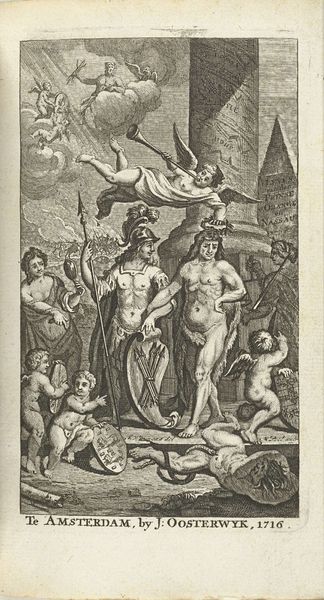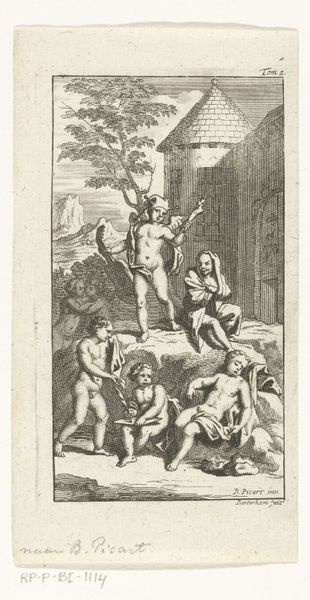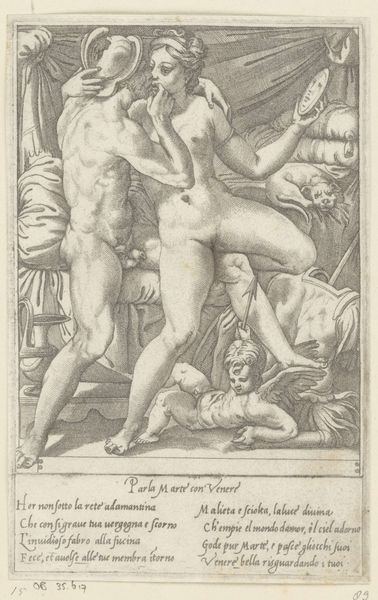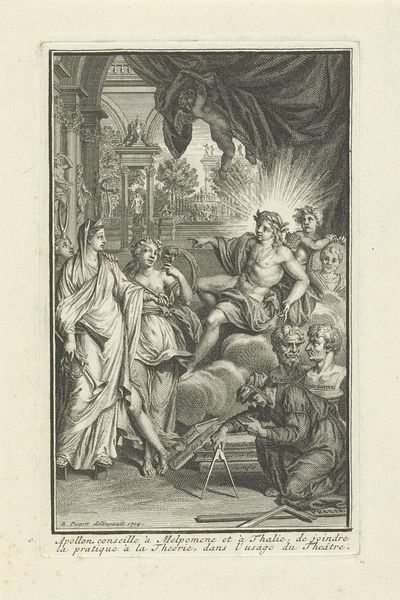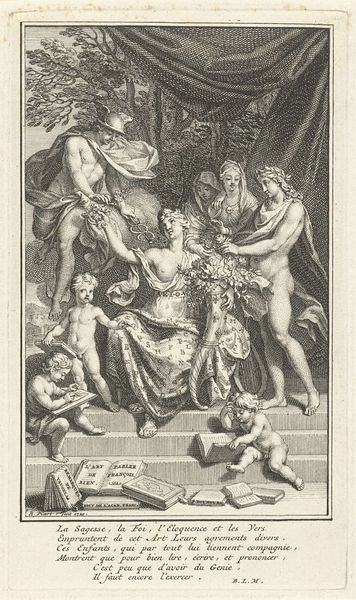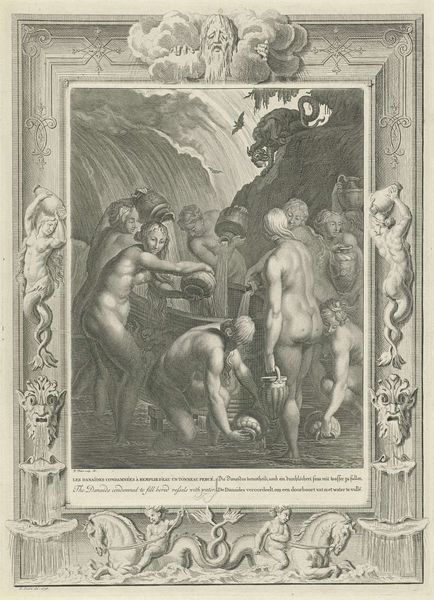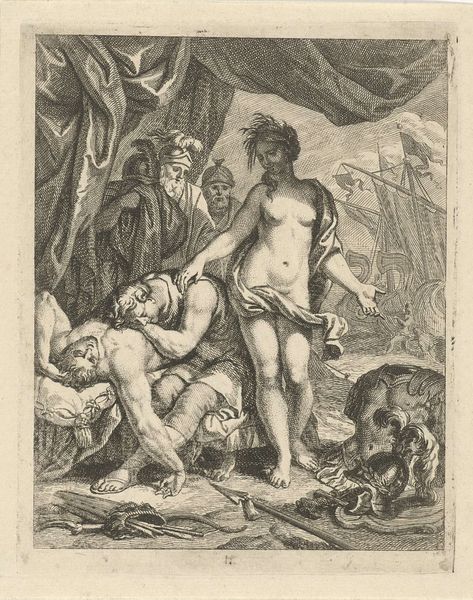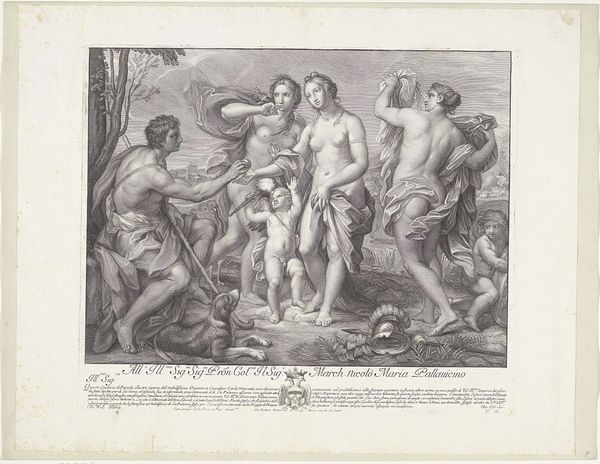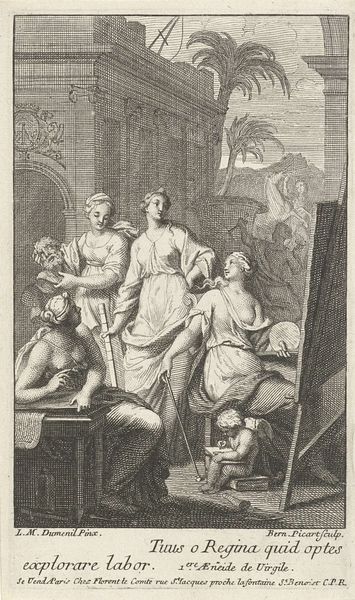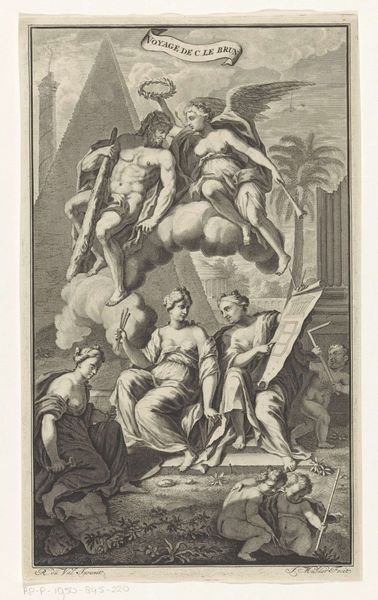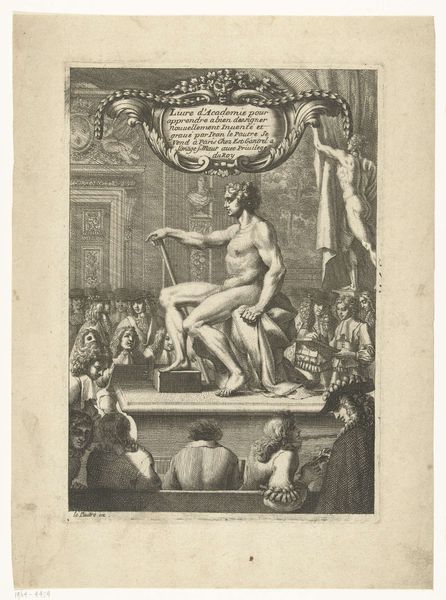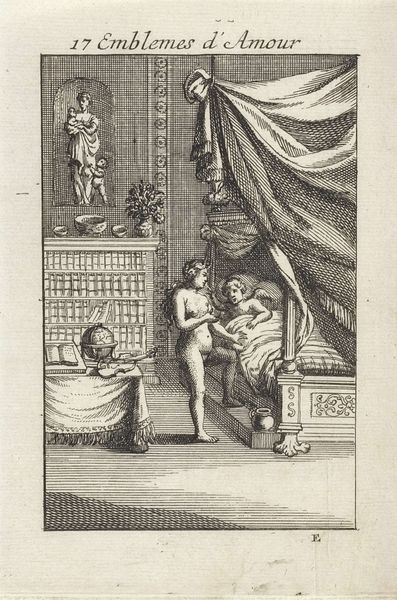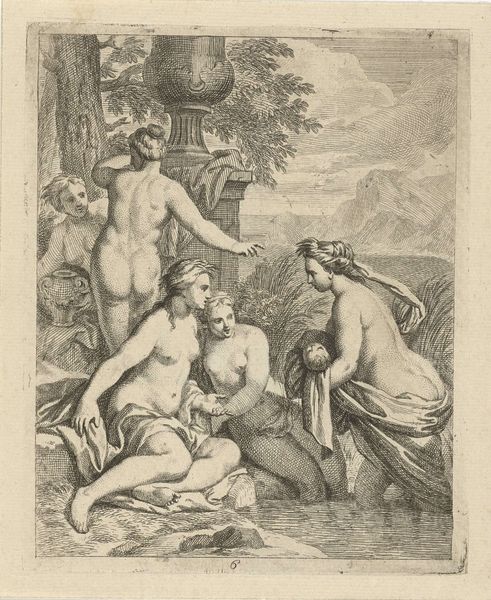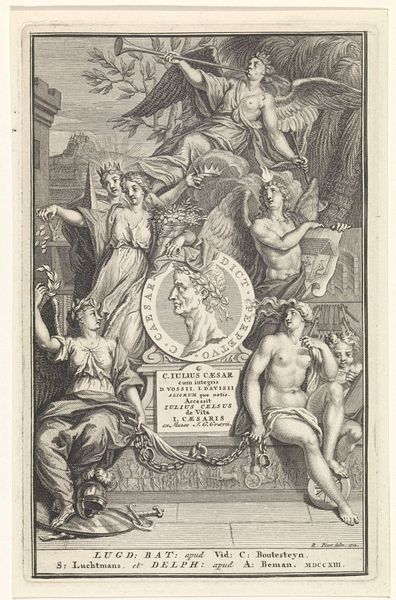
print, engraving
#
neoclacissism
# print
#
old engraving style
#
classical-realism
#
figuration
#
ancient-mediterranean
#
genre-painting
#
history-painting
#
engraving
Dimensions: height 174 mm, width 117 mm
Copyright: Rijks Museum: Open Domain
Curator: Here we have an engraving, “Theseus and the Minotaur," dating sometime between 1765 and 1837. It is currently held in the Rijksmuseum. Editor: My first impression is of stark heroism amidst classical ruin. The victor standing casually over the vanquished beast – there's a real sense of stoic detachment. Curator: Absolutely. Look closely, and you will note that the artist utilizes a clear Neoclassical visual vocabulary to depict the triumph of reason, represented by Theseus, over brutal instinct. The clean lines, balanced composition, and idealized human forms—all pointing to a desire to emulate ancient Greek and Roman art. Editor: But it's the engraving process itself that grabs me. The lines creating this scene—the pressure, the tools involved, the sheer labor of transferring such an epic narrative through physical means. Each stroke is deliberate, marking material reality, a world far removed from gods and monsters. Curator: Though consider the story it tells. Theseus embodies Athenian values, and is the culture hero who ventures into the labyrinth, confronts chaos, and restores order. Even the Minotaur represents the persistence of archaic fears and desires held over from matriarchal traditions, all of which Theseus, like the Greeks, has slain. Editor: But what about the cultural context of *making* the print? Think about the engraver themselves, their social position. Were they simply executing a commission or engaging critically with these narratives of power and order? The texture tells tales beyond just Greek myths, the world is made visible with tools in a studio. Curator: Certainly, one can analyze the work within the economic and social contexts of printmaking, but for me, the enduring power resides in its archetypal symbols and the way it captures the human drama of courage and triumph. Theseus overcoming the Minotaur speaks to something profound within the collective psyche. Editor: It's amazing how much symbolism one can distill into such a physically made and widely distributed form. What begins as ancient history goes through such physical actions in its time. Curator: A rewarding example of how an old story told through classical idealism becomes forever relevant to any given period of its consumption. Editor: A satisfying look, then, into both a myth and the very stuff from which we build images and ideologies.
Comments
No comments
Be the first to comment and join the conversation on the ultimate creative platform.
